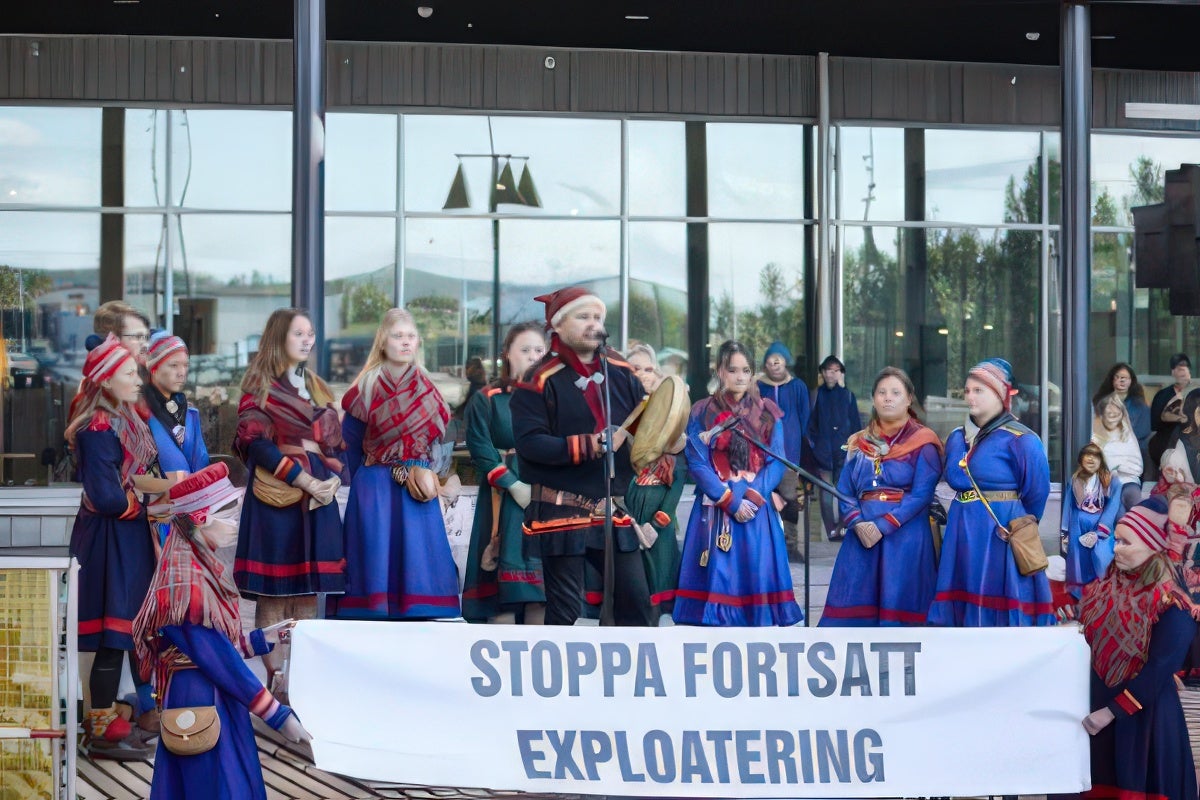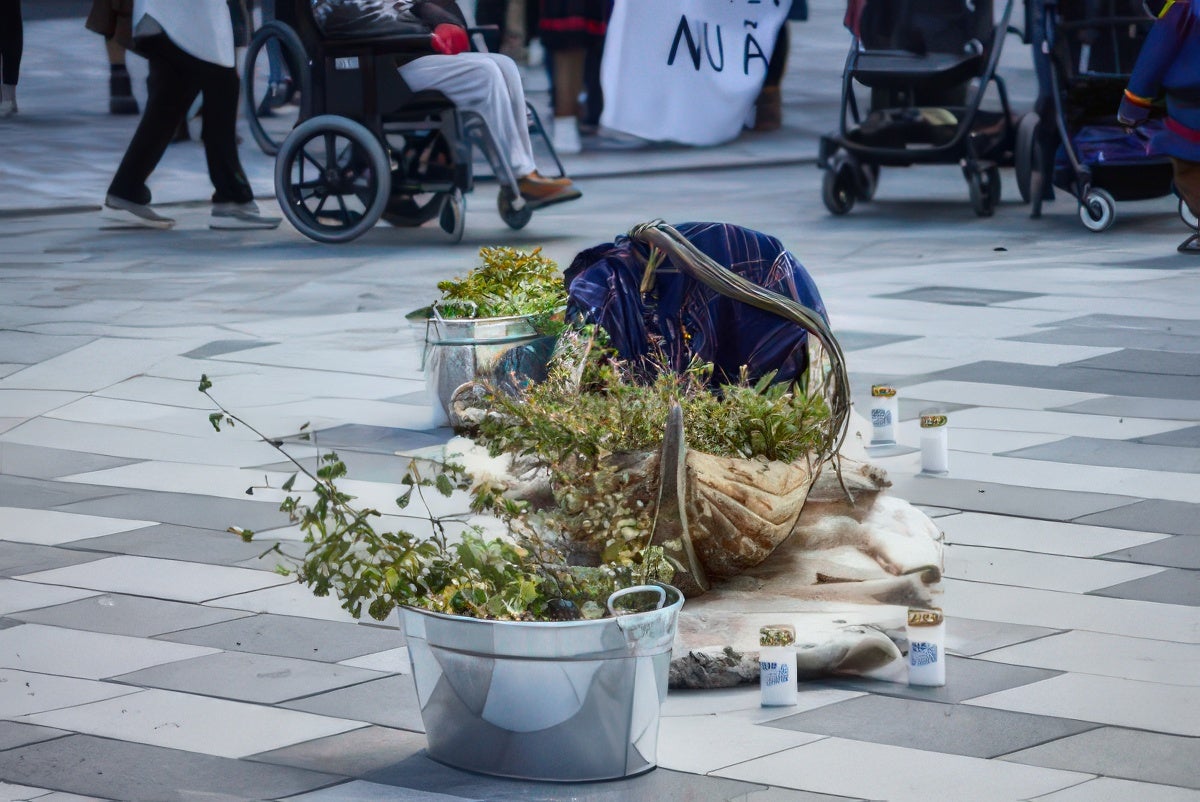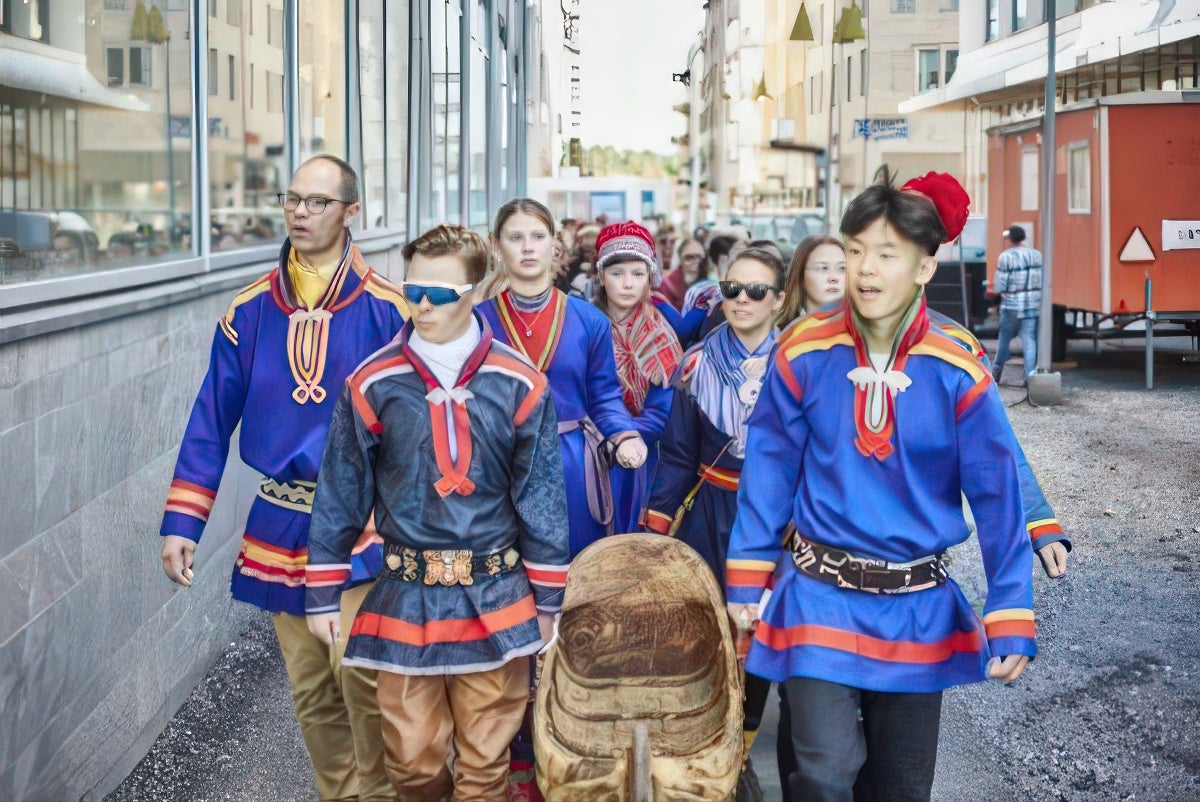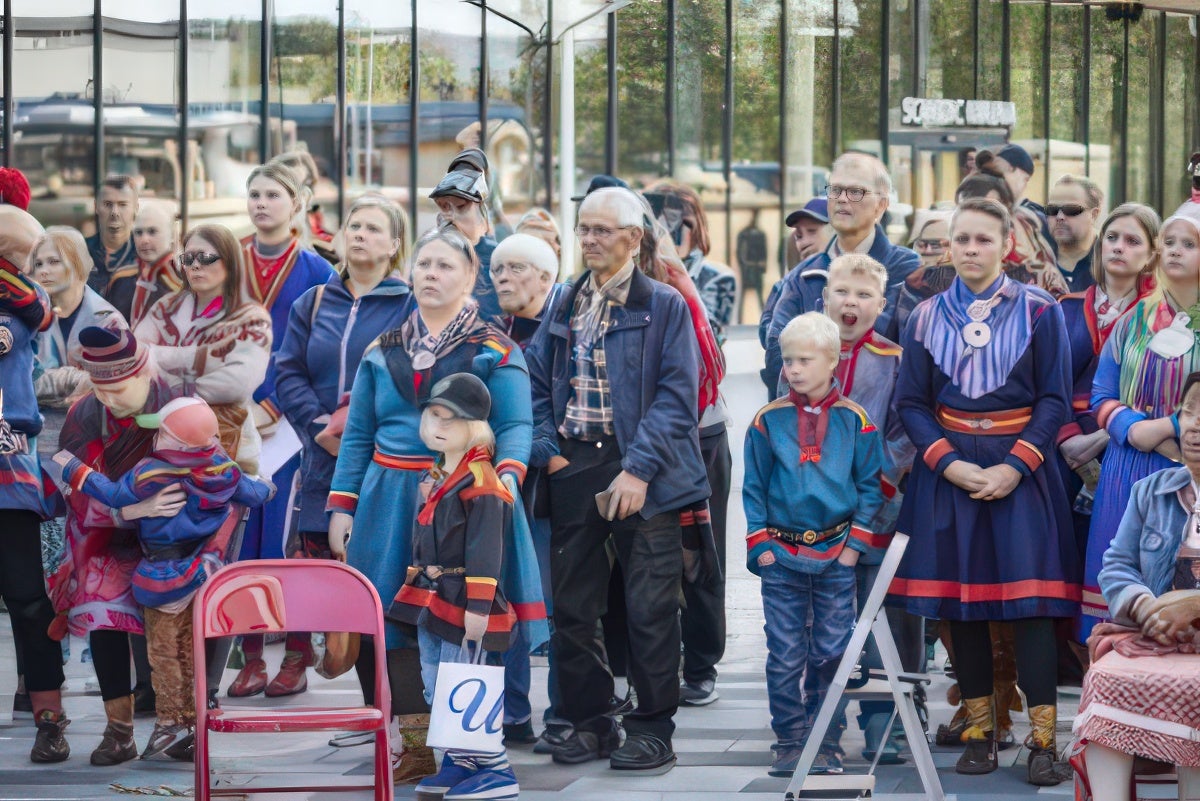
By Lucas Kasosi (Maasai, CS Intern)
A solemn procession moved through the new city center of Kiruna, Sweden. Sámi youth and members from the Gabna and Laevas reindeer herding communities walked in silence, carrying an ackja, a traditional Sámi sled, along the path their ancestors once followed with migrating reindeer. At the heart of Europe’s transition to a so-called “green economy,” they were not celebrating progress, but mourning land already lost to a century of mining. They were also raising their voices against future exploitation.
The event, held on August 26, 2023, was both a memorial ceremony and a protest, the first public Sámi demonstration of its kind in Kiruna. It was led and organized by Sámi youth resisting the expansion of mining on their ancestral land. Funded by a Keepers of the Earth Fund grant, the initiative empowered young community members to honor their land, deepen intergenerational ties, and mount a visible, collective opposition to the proposed extraction of rare earth minerals by LKAB, Sweden’s state-owned mining company.
“This project brought us closer together,” said one young organizer from Laevas. “It gave us space to be ourselves, to rest, and to resist.”

Mining, Displacement, and Cultural Erosion
For over 130 years, LKAB has mined iron ore in the region, displacing Sámi communities, destroying reindeer migration routes, and consuming vast areas of pastureland. Now, with the discovery of Europe’s largest deposit of rare earth minerals, the company plans further expansion, directly threatening Gabnas grazing territory.
The situation reflects a deeper existential crisis: if reindeer herding is lost, Sámi land rights, tied to herding under Swedish law, would disappear, too. “This is not just about minerals. It’s about cultural survival, language, and the right to remain Sámi on our own land,” explained Jannie Rueije (Sámi).
In response to the threat, Sámi youth launched “Min Ođđa Giron (Our New Kiruna),” a grassroots movement built on youth organizing, cultural memory, and political visibility, currently led by Rueije.

Ceremony as Resistance
Planning began in early 2023 through several in-person and virtual gatherings, where young Sámi ranging in age from 17 to 37 reconnected, strategized, learned from one another, and got to know eachother. Some were hesitant to speak about Sámi values and for Sámi rights in public due to the pervasive racism in Kiruna, a mining city where Sámi identity is often hidden for safety. But through the project, connections grew. “The youth created a space we never had before,” said one Elder. “I didn’t know we needed it.”
The demonstration began with a memorial procession. Carrying the ackja, a sled once used during seasonal reindeer migrations, the youth moved silently through the new city center, past towering signs which the mining company put up that read “Sustainability” and “Together into the Future.” Behind them, more than a hundred supporters followed, including Sámi Elders, children, and allies from Norway, Finland, and southern Sweden.
Arriving at the town hall, the ackja was placed before a small stage, surrounded by flowers and offerings. One Eder removed an old lasso from around his neck and laid it on the sled. “It felt like he was burying the reindeer,” recalled Rueije. “It was heartbreaking but also the most beautiful act I´ve witnessed.”

A Turning Point for Youth Leadership
Following the memorial, the protest began with a clear message: “We have now mourned the already-lost land. We are not willing to do this again. No more mining.” Youth and community members spoke from the stage, joined by Sámi poets and leaders from organizations including the Sámi Parliament and the international climate movement Fridays for Future, whose founder, Greta Thunberg, also attended.
“It felt great when we saw the big support from the community and our Elders. That meant everything to us,” said a youth from Gabna.
To support their advocacy, the youth received pro bono media training from the Swedish group Skiftet, created the dedicated Instagram page @gapnajaleavazanuorat, and commissioned digital protest art by Sámi artist Káren-Ann Hurri. Their social media posts reached far beyond Kiruna, spreading awareness of Sámi resistance across Sápmi and internationally.

Internal Strength, External Change
The impact of the project extended beyond one day of action. In the months that followed, the youth held multiple debriefing sessions and planning gatherings to reflect and prepare for next steps. These meetings served as spaces for collective healing and capacity building, fostering the skills and relationships needed to carry the movement forward.
The support from Keepers of the Earth also enabled workshops, materials, meeting space, and honorariums for youth leaders. Meanwhile, artists, jojkers, and poets volunteered their time, underscoring widespread Sámi solidarity.
“During the ceremony, we had our youngest community member, just weeks old, and our oldest, almost 100. It reminded us why we are doing this, for those before us, and those yet to come,” Rueije said.

Toward Sámi-Led Futures
The communities of Gabna and Laevas face multiple layers of pressure, iron ore mines, military zones, deforestation, climate change, and disrupted reindeer migration. Despite these challenges, Sámi youth are asserting a future rooted in culture, identity, and land stewardship.
“This year I learned so much,” said a youth from Laevas. “It felt good to finally do something, not just accept it.”
As Sámi youth continue their organizing, the movement is grounded in ancestral knowledge and collective memory. “The ackja we carried had traveled these lands before, used by our ancestors during migration. Now, it carries our hope and resistance,” another speaker said.
In a city reshaped by extraction, Sámi youth are reclaiming space not just for protest, but for ceremony, community, and the right to exist as Sámi on Sámi land.
In 2024, Laevas Sameby received a Keepers of the Earth Fund grant from Cultural Survival. KOEF is an Indigenous-led fund within Cultural Survival designed to support the advocacy and community development projects of Indigenous Peoples. Since 2017, we have supported 392 projects in 40 countries through small grants and a wrap-around approach totaling $2,219,369. KOEF provides grassroots Indigenous-led communities, organizations, and traditional governments to support their self-determined development projects based on Indigenous values. Predicated on the United Nations Declaration on the Rights of Indigenous Peoples, Cultural Survival uses a rights-based approach in our grantmaking strategies to support Indigenous grassroots solutions through the equitable distribution of resources to Indigenous communities.
